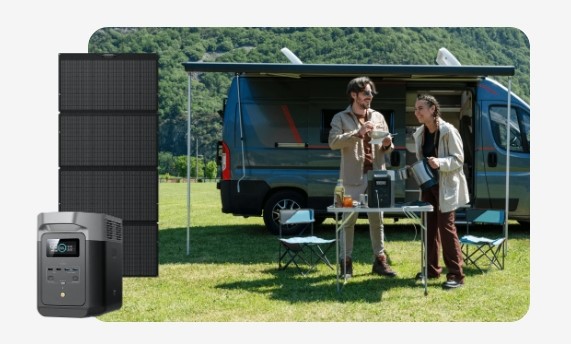Power Bank Portability and Power Output Guide
Choosing the right power bank ensures that your devices stay charged wherever you go, without adding undue bulk to your bag. With countless options available in the market, making the perfect choice can be daunting. We’re here to demystify the process for you. This guide will cover everything you need to know about power bank portability and power output, ensuring you make an informed decision. From the significance of size and weight to understanding battery capacity, output ratings, and their direct impact on charging performance, this guide provides a comprehensive look into how to pick the right power bank for all your needs. Let’s dive into the finer details and ensure your devices are always ready to go.
Understanding Power Bank Portability
Portability is a key component when selecting a power bank. It’s all about striking the right balance between capacity and convenience. This section explores the factors affecting a power bank’s size and weight, as well as how these relate to battery capacity.
Size and Weight Considerations
When looking for a portable power solution, the size and weight of a power bank are crucial elements. Compact power banks easily fit into pockets or bags, making them ideal for quick trips or ever-ready backup energy sources. However, with increased compactness, the capacity usually diminishes. Travelers and daily commuters prefer options that don’t weigh them down but still offer enough power to keep all essential devices operational. While lightweight options might sound attractive, one must consider the trade-off with capacity. Generally, power banks within the range of 5,000 to 10,000mAh strike a good portability balance, suitable for most daily use while remaining relatively lightweight.
Battery Capacity vs Portability Trade-offs
The battery capacity, measured in milliamp hours (mAh), ranges vastly among available models. Higher capacity power banks, such as those exceeding 20,000mAh, can charge multiple devices multiple times. However, these often come in bigger and heavier packages. The trade-off is evident: more power means more weight. It’s important to assess your specific needs, be it a single charge for a smartphone or powering multiple backpacking gadgets. For minimalists or occasional users, a 10,000mAh version offers ample power without excessive size or weight. Seasoned travelers might lean towards higher capacities, despite the increased weight, to ensure their electronics maintain life over extended periods.
Decoding Power Output for Your Devices
Beyond size and weight, understanding power output is critical. Choosing a power bank with the correct output and fast charging capabilities can make a significant difference in your device’s charging time and efficiency.
Output Ratings and Fast Charging Explained
Output ratings indicate how quickly a power bank can deliver charge to a device. Ampere ratings (e.g., 1A, 2.4A, 3A) and voltage options (5V, 9V, 12V) dictate charging speed. Most modern devices support faster charging technologies such as Power Delivery (PD) or Qualcomm Quick Charge, which require higher output ratings to perform optimally. Therefore, selecting a power bank with the correct specifications ensures you maximize charging speed for your compatible devices. Fast charging drastically reduces waiting time, especially for newer smartphones and tablets. Always ensure your devices support the fast charging protocols you plan to use; otherwise, you won’t harness the potential of high-output ratings.
Matching Output with Device Requirements
Each device has specific power needs, usually outlined within the device’s manual or battery specs, ensuring you meet those needs extends the battery life and performance. For example, smartphones and smaller electronics generally need 5V output, whereas tablets and some laptops might need up to 20V. Failure to align these requirements doesn’t just impede charging speed—it can damage the device in the long run. Before purchasing, double-check capabilities and alignment with existing devices to avoid costly errors. Consider compatibility first, especially if you own diverse gadgets or plan for long-term use.
Finding the Right Power Bank: Practical Use Cases
Knowing which power bank suits different scenarios helps in making a practical choice that meets your lifestyle critiques. We’ll explore options tailored for varied environments and lifestyles.
For Travel, Work, and Outdoors
For those constantly on the move, versatility in a power bank stands paramount. Travelers prefer compact, high-capacity options that aren’t cumbersome but still carry enough power for lengthy delays or intermittent power sources. Professionals who work remotely can appreciate models with multiport capabilities for charging multiple devices simultaneously. Outdoor enthusiasts prioritize rugged build and water-resistant features, as these ensure their gear can withstand the elements. Tailoring your choice based on specific needs—whether through power, portability, or durability—adds a layer of convenience to your life, enhancing productivity and peace of mind.

EcoFlow Power Banks Compared
EcoFlow offers a variety of power banks crafted for different needs and environments. Their range includes the EcoFlow known for robust capacity and efficiency, ideal for consistent use or recursive tasks involving multiple devices. They cater to high-capacity needs without sacrificing portable design. EcoFlow extends capacity further, meant to serve heavy-duty needs, including supporting rechargeable laptops and powering small appliances on the go. They seamlessly blend design with technology, providing reliable options across varying usage scenarios. Available features such as solar-powered recharge also affirm EcoFlow’s commitment to eco-friendly innovation.
Conclusion
Selecting the right power bank involves balancing size, weight, capacity, and power output. Understanding these fundamentals ensures you choose a product that best fits your lifestyle and device requirements. Whether you’re navigating international flights or venturing into the wild, an ideal power bank offers more than just recharge—it provides peace of mind knowing your devices are equipped to keep up with you. Explore options meticulously, prioritize functionality specific to your usage, and leverage fast charging technology whenever possible. By doing so, you’ll never find yourself out of power when you need it most.










